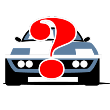- Welcome to AutoPuzzles - The Internet's Museum of Rare Cars!.
News:
Pictures in the indexes!!! Click Here!!!
Solved: Wendax 3237 - Burlat
Started by Wendax, June 04, 2020, 01:37:01 AM
Previous topic - Next topic0 Members and 1 Guest are viewing this topic.
User actions

